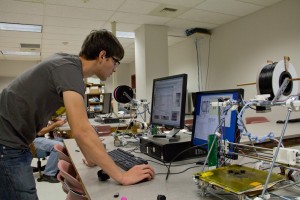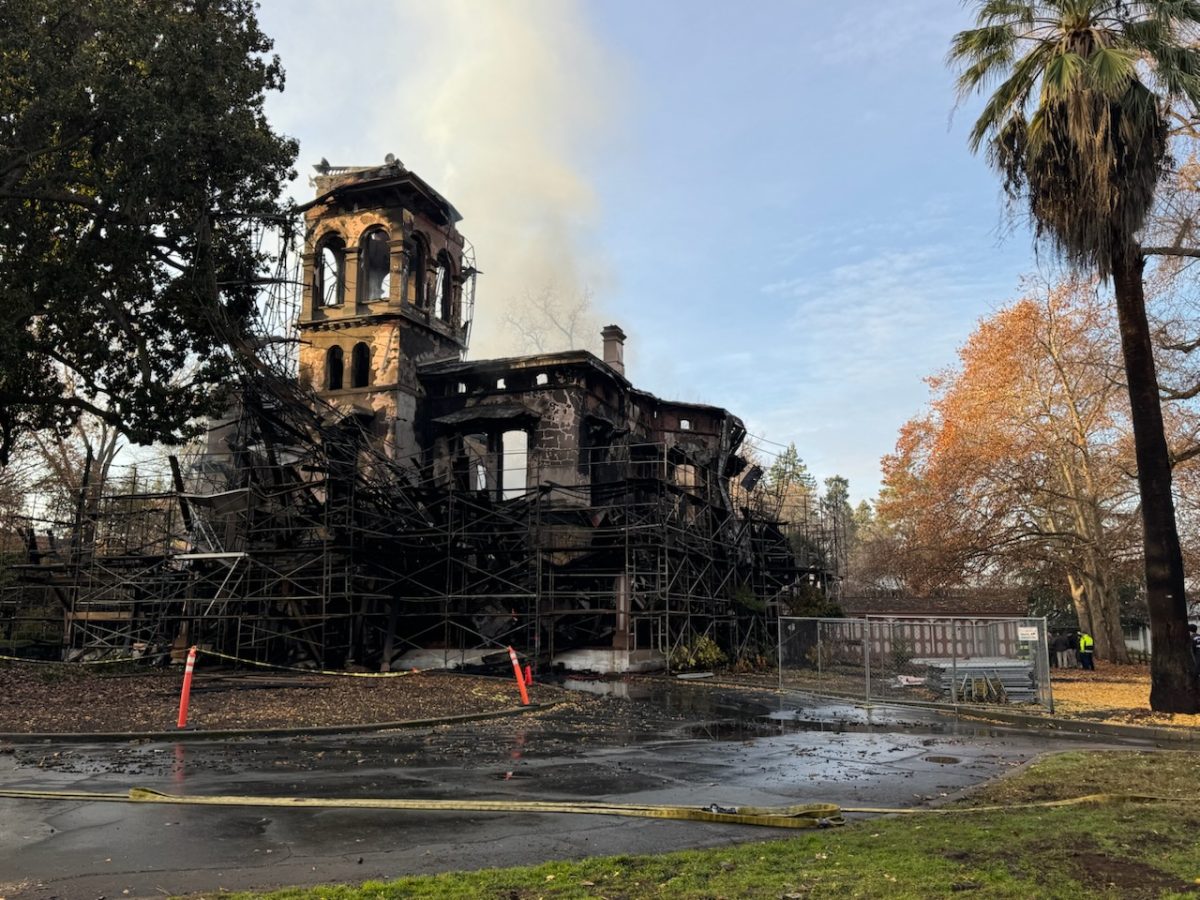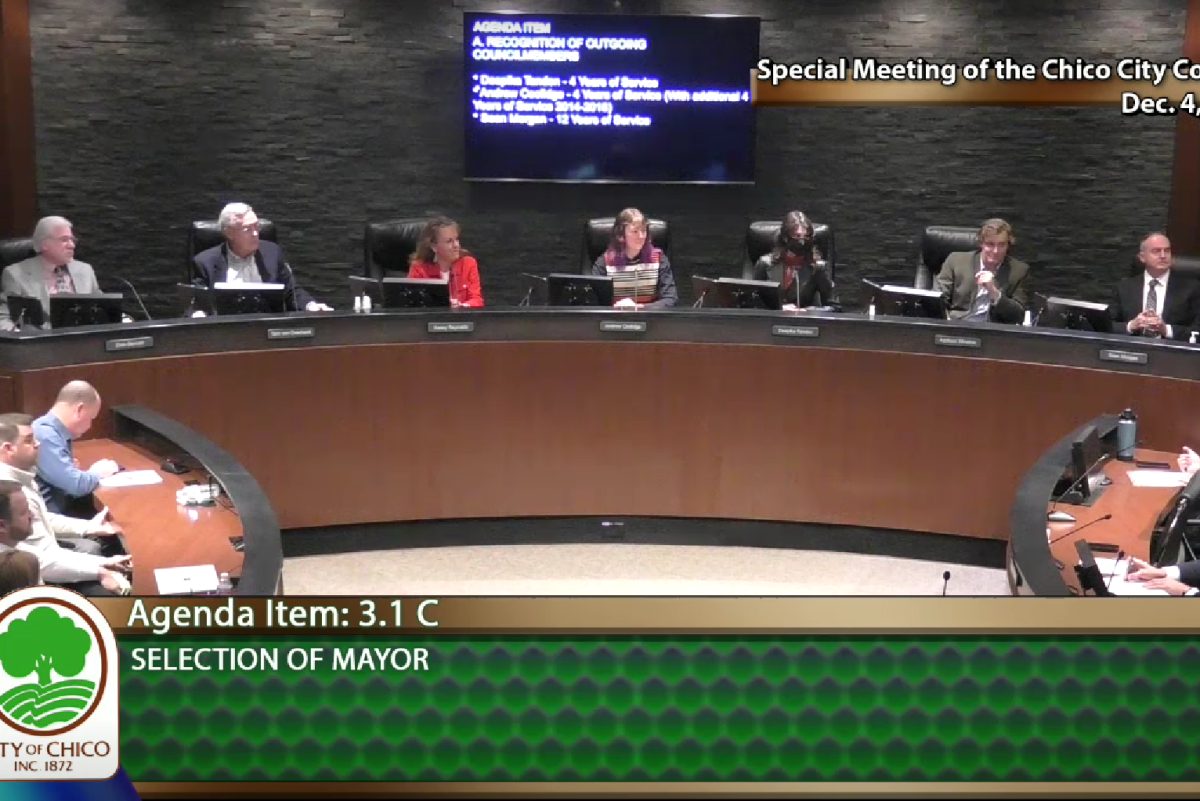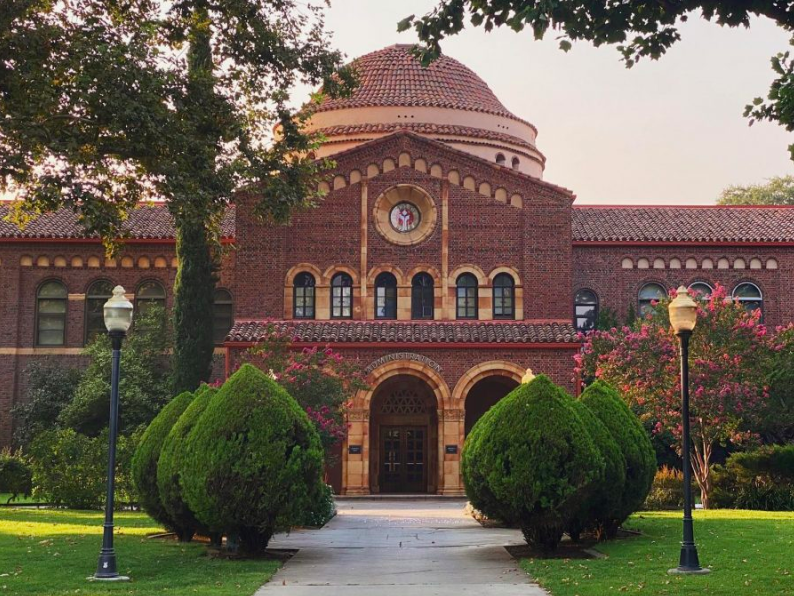
Electrical engineering major Marco Port, who helped assemble the machine, programs design specifications into the 3-D printer.
Affordable 3-D printing is now available to everyone at Chico State, thanks to the creative vision of two O’Connell Technology Center students and an engineering professor.
Recently, the engineering department received a grant of $2,800 to purchase two 3-D printer kits. The idea to acquire the technology had been on the back-burner for years, but costs were prohibitive in the past, said Dale Word, associate professor of electrical and computer engineering.
Each kit cost around $700, Word said.
“These technologies have been around for a long time,” he said. “It’s just only recently that it’s become inexpensive enough that we can get it and make it accessible enough for students.”
During the summer, Word, computer engineering major Marco Port and electrical engineering major Austin Walter, put the machines together and have been tinkering with them ever since.
Though the primary goal is to support coursework for students in the engineering department, the printers are available to anyone on campus who is interested in starting a project, Word said.
“I love the concept of students being able to serve that open ended creativity,” he said.
The technology of the printer is fairly simple, Word said.
The printer works with design software like SolidWorks, used by mechanical engineering students. After drawing the object on the software, the user can send the draft off to print.
At the base of the printer is a hot glass plate. The plate moves on a three-dimensional axis.
At the top of the printer, a roll of plastic filament is pulled through an extruder, which feeds the plastic into the hot brass head. The head melts fine 2 millimeter strands of plastic on to the plate. The object is viewed and drawn in a set of horizontal slices.
“It paints one slice, moves up a little bit, and paints the next slice,” Word said.
The printer was building 4 small mecanum wheels, typically used to allow robotic parts to move in multiple directions. The wheels, less than an inch in size, would take an hour to print.
“If you told someone to manufacture one of these, it’d be really hard,” Word said. “With a 3-D printer, it’s a fairly simple thing to do.”
Port said it would cost him $40 to buy the wheels from an online website. Instead, he could use the printer and get the job done for $2, totaling the cost of the plastic.
“We have the ability to create parts that are hard to find and aren’t cheap,” Port said.
The software is open source, allowing students to download millions of different objects that are drafted by an online community of contributors.
Word said as the technology becomes more available to the average consumer, 3-D printing will become a cheaper alternative for those looking to get specialized plastic parts.
“Say a part of your vacuum cleaner breaks,” Word said. “The day may come when you don’t order a new part. Instead, you just grab the model off the website and go print it.”
Some of the parts, including the 3-D printer’s controller board and motors, have already been used in ink printers for years. Mechatronic engineering major Gerrit Harkness said he wants to clone more affordable 3-D printer kits using refurbished motors and printed plastic parts. The kits could then be donated to high schools.
“When technology is able to get in the hands of regular people, it changes the environment for everybody,” Harkness said.
Word encouraged students interested in using the printer to contact him.
“The worst thing would be if no one came to use it,” Word said.
Have a project in mind? Contact Dale Word at [email protected].
Mozes Zarate can be reached at [email protected] or @theorion_news on Twitter.
Watch the video here:
http://theorion.com/feature-3d-printers/








